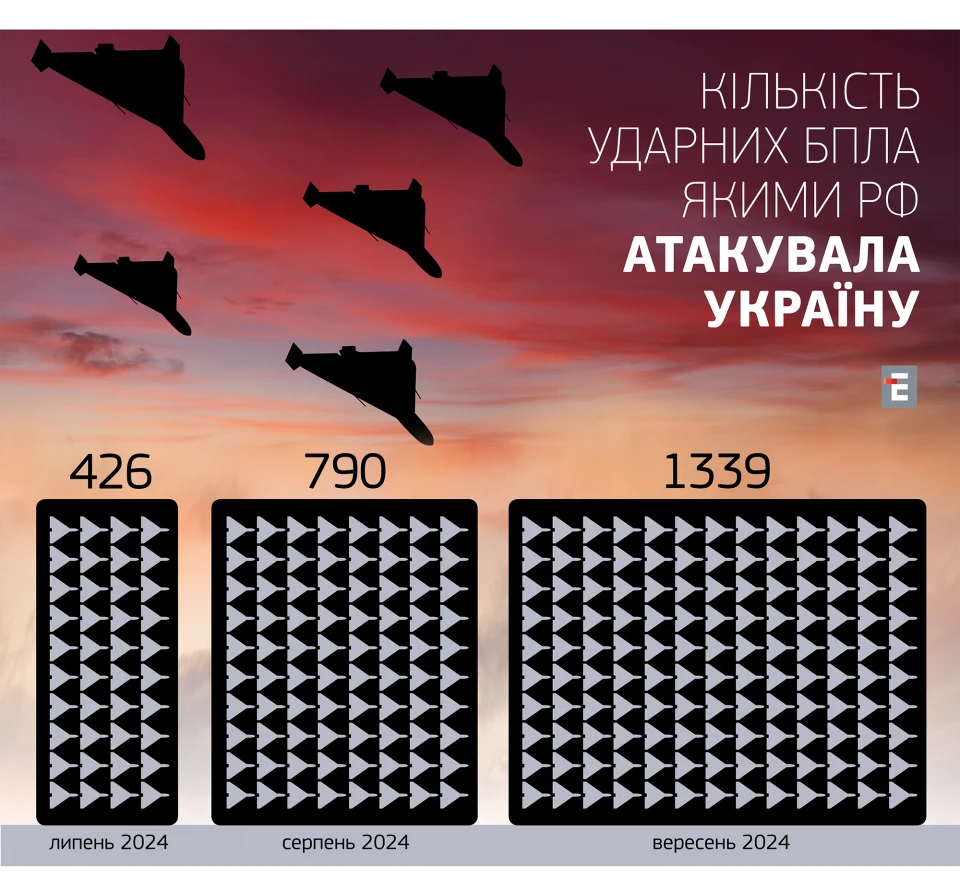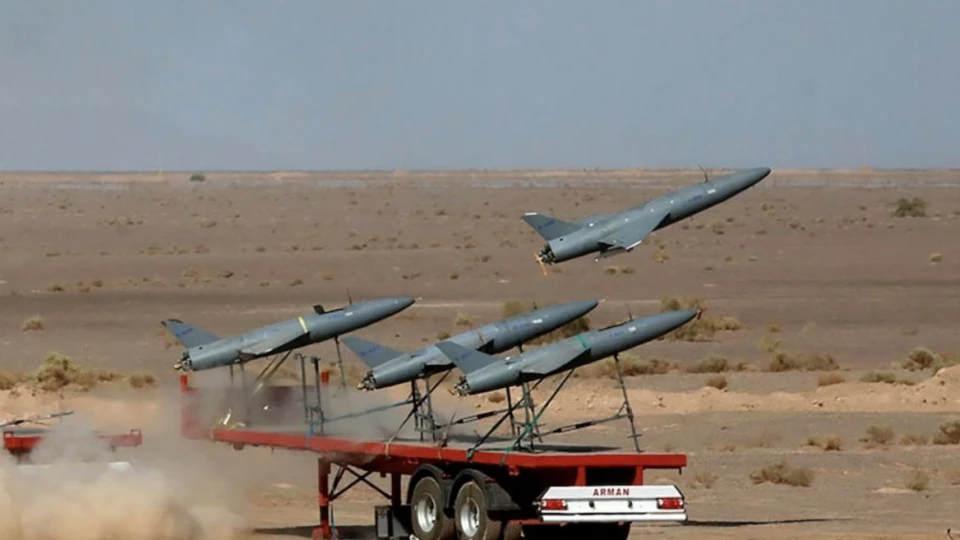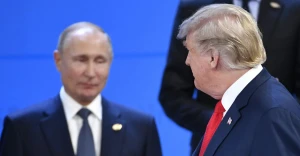
Mounting Russian drone attacks on Ukraine: enemy capabilities and Ukrainian countermeasures
Russian drone attacks on Ukraine escalated to a new, unprecedented level of intensity in September, with numbers continuing to rise. In response, the Armed Forces of Ukraine are enhancing their capabilities to counter these threats
Content
-
Rapid increase in Russian drone attacks on Ukraine: facts and figures
-
What to expect next: likely further increases in attack intensity and new Russian capabilities
-
How Ukraine should cope with new challenges
Rapid increase in Russian drone attacks on Ukraine: facts and figures
According to the Ukrainian Air Force, Russia launched 1,339 attack drones at Ukraine in September, marking a significant increase compared to any previous month. This averages out to about 44 Shahed drones used each day.
This number is an estimate and changes throughout the month. For example, on September 14, Russia launched the highest number of drones - 72 in total.
Notably, September 2024 was the first month that Russia managed to launch drones at Ukraine daily. Out of the 1,339 drones launched, 1,107 were shot down, while others were either destroyed by Ukrainian electronic warfare or returned to their senders during the attacks.
 To illustrate the increase in attacks, the Institute of Science and International Security reports that Russia launched 790 drones in Ukraine in August 2024, compared to 426 drones in July.
To illustrate the increase in attacks, the Institute of Science and International Security reports that Russia launched 790 drones in Ukraine in August 2024, compared to 426 drones in July.
While most Russian drones are intercepted by Ukrainian forces, some do get through and inflict serious damage. In September, there were also many cases of Russian drones flying dangerously close to Ukrainian nuclear power plants.
What to expect next: likely further increases in attack intensity and new Russian capabilities

Lieutenant General Ihor Romanenko, former Deputy Chief of Ukraine's General Staff, warns that the intensity of shelling may continue to rise as Russian capabilities expand.
"The war is ongoing, and from both a military and a moral-psychological perspective, the destruction of any targets impacts our citizens. Their capabilities are growing; they can now produce nearly fifty drones a day, receiving some from Iran and producing the rest themselves. This means they are scaling up and can launch attacks with Shahed drones every day. Given these circumstances, we must acknowledge that, unfortunately, this reality will persist," Romanenko said in a comment to Espreso.
Meanwhile, Andrii Kovalenko, head of the Center for Countering Disinformation, mentioned in late September that the occupying army plans to carry out attacks on Ukrainian regions around the clock, making air raids almost a constant reality for Ukrainians.
"But this game can be played by both sides. Unlike us, Russian air defense is point-based and can't fully protect the country from UAVs. As the intensity of attacks increases, we can expect more frequent failures in Russian air defense, similar to what happened in Toropets," Kovalenko adds.
According to experts from Defense Express, Russia has surpassed its production goals and is now capable of producing fifty Shahed drones each day. Additionally, these drones continue to arrive in Russia via various routes.
For instance, the Alabuga Special Economic Zone, located in Tatarstan, was originally set to produce 6,000 Shahed drones for the Russian military by September 2025. Instead, it is ahead of schedule, having produced over 6,000 Shaheds by August 2024.
"It looks like by next fall, they could finish producing at least 4,700 Shaheds at this facility alone," said Ivan Kyrychevskyi, a military expert at Defense Express.
Dmytro Zhmailo, co-founder and executive director of the Ukrainian Centre for Security and Cooperation, points out that while the Russians currently lack complete drone production lines, they aim to establish a full production cycle for Shahed drones by the end of next year.
The goal of these attacks is to weaken our air defense system and expose the logistics of the forces protecting Ukrainian airspace. In this way, the Russians are preparing for new, large-scale missile strikes and the use of ballistic weapons. What we're witnessing now is a continuous and intensive preparation for this," he explains on Espreso TV.
How Ukraine should cope with new challenges

Experts note that the Ukrainian forces are continuously enhancing their capabilities to combat enemy drones, as shown by their success in shooting down UAVs during the most challenging month for attacks. However, Ihor Romanenko emphasizes the need for society to unite in this effort.
“To effectively combat this, we must target the plants producing Shaheds and strengthen our air defense systems, especially against aerial threats like the Shaheds. People must follow air raid alert rules. Additionally, businesses can protect themselves and their employees by acquiring electronic warfare equipment. The state has allowed purchases not only for the Ukrainian Defense Forces but also for businesses and institutions,” says the lieutenant general.
Ivan Kyrychevskyi also stresses that Ukraine needs to further strengthen its air defense system.
“We will need to prioritize air defense capabilities over ground-based assets,” he states.
Ukrainian Armed Forces serviceman and security expert Ivan Varchenko believes Russia is trying to make up for ammunition losses by ramping up drone attacks. He thinks this strategy could soon cause shortages in both areas.
“We see that they are attempting to offset their significant ammunition losses with a larger number of drones. However, the Russians cannot quickly increase their ammunition supply for daily use. They are likely relying on stockpiles meant for October, November, and December, which they are now forced to use to maintain their firepower against Ukrainian targets,” he said on Espreso TV.
“I hope they will eventually run out of both ammunition and drones.”
- News












































